Sure, you can buy sand fleas at your local bait shop, but you don’t have to! All you need to do is learn how to catch sandfleas for bait, and you’ll have an abundant bait supply that doesn’t require you to spend a dime! Already tried catching sand fleas and failed miserably? Follow our step-by-step guide below, and you can take home a bucket of sandfleas without breaking a sweat! We’ve even included mole crab facts so you can better understand their behavior!
What Is a Sand Flea?
Sand fleas, also known as mole crabs or sand crabs, are small, burrowing crustaceans that live in the sand, often close to shorelines or beaches.
Sand fleas are not really fleas at all, but they do look like miniature lobsters, and scurrying around the beach can be a little disturbing to unsuspecting beach-goers. Beachgoers may glimpse them when the ocean is receding before they quickly bury back underground.
Mole crabs are usually gray or brown in color with a hard shell on top and soft flesh underneath. Their bodies are flattened and they have two pairs of biramous appendages that are used for walking. They have compound eyes that allow them to see well in low light conditions. They breathe through gills like fish so need to be close to water although they can live out of the water for a few hours to a few days, depending on the temperature and if their gills do not dry out.
The red-clawed mole crab is common along the East Coast of North America from Florida to southern Canada. It lives in burrows near the shoreline where it can find food such as algae and small invertebrates like mollusks and worms.
Sand fleas make excellent bait for catching all sorts of fish.
How to Catch Sand Fleas
1. Get a Bucket and a Sand Flea Rake
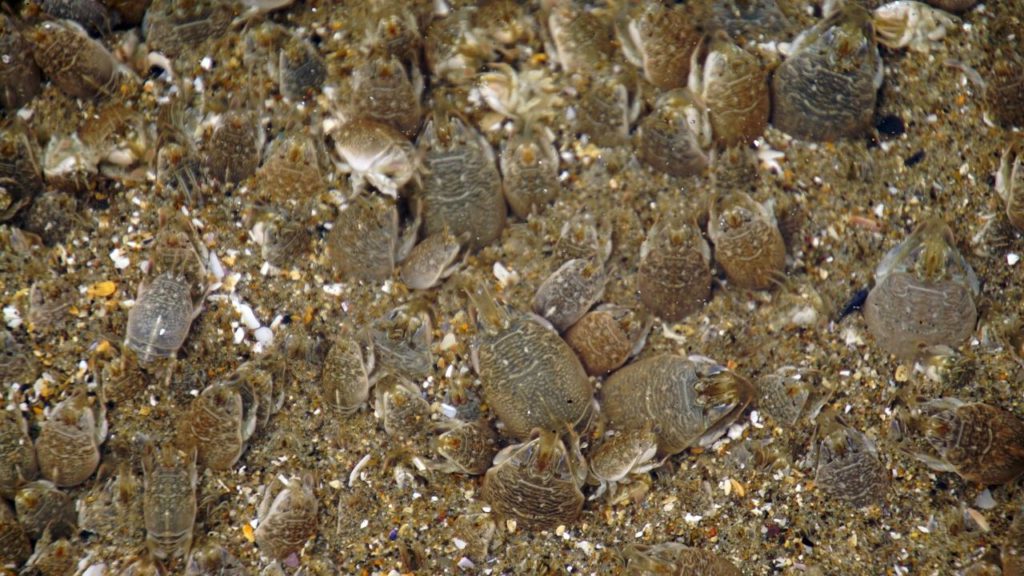
Before you set out to the beach and hunt for some sandfleas, you must have the right equipment. Don’t worry; you’ll just need two pieces of equipment – a bucket and a sandflea rake.
A sand flea rake is like a supersized version of a kitchen sifter. It has an extended handle and a sifter-like basket on the other end. The design of a sand flea rake allows you to scoop fleas out of the sand without damaging their delicate bodies.
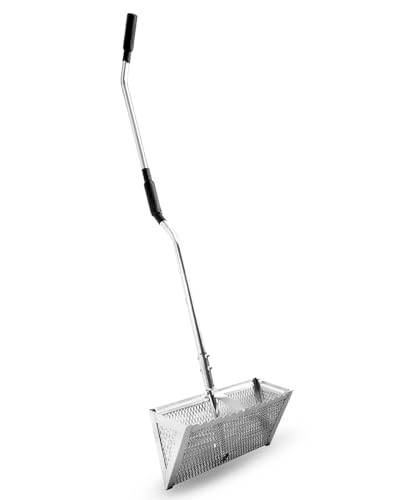
If you don’t have a budget for a sand flea rake, you can use your hands or a plate.
As for the bucket, you can either use a small or a large one. However, we always suggest the latter because you’re going to add saltwater and sand to keep the sand fleas alive.
Expert Tip: Don’t confuse sand fleas for bait with the parasitic insect, which goes by the same name. Sand fleas or mole crabs for fishing (predominantly for catching pompano fishing) are part of the decapod crustaceans. But, unlike crabs, they can’t pinch you.
2. Hunt for Sand Fleas During an Outgoing Tide
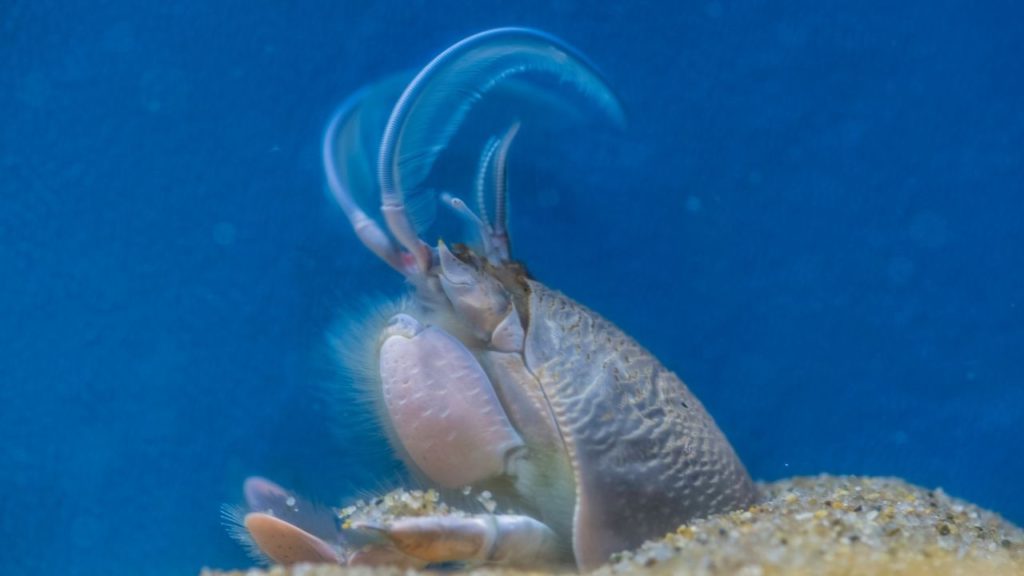
If sand fleas sense any danger approaching, they will burrow into the sand. Plus, their eyes are usually positioned above the ground to survey their environment for any looming danger.
Fun fact: Sand fleas have their antennas extended above the sand so they can snag algae and plankton when the waves hit the shore.
If you’re looking to catch sand fleas in large quantities, your best chance is during an outgoing tide. When the waves subside, this is when you will find sand fleas digging into the sand. They leave their burrows to search for food and can be seen going around in the sand.
3. Replicate the Natural Habitat
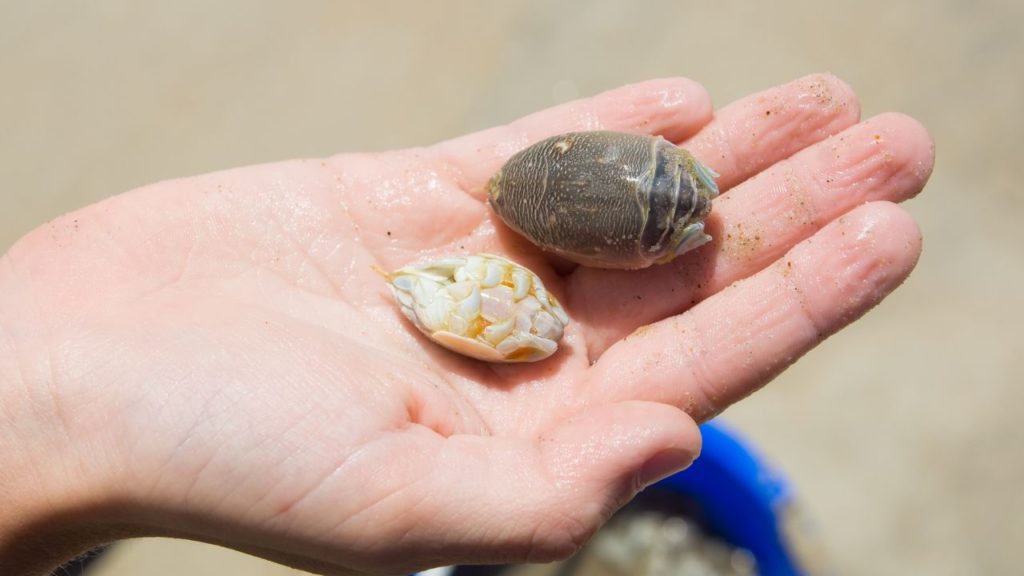
Remember the bucket mentioned in step 1? You will need to make it an ideal habitat for your catch.
When replicating their natural habitat, you will need a bucket to keep your sand fleas alive for as long as possible. Start by adding some sand and saltwater to your bucket.
Expert Tip: Do not forget to change the water from time to time. Sand fleas will use up all the oxygen in the water when they filter out toxins from their bodies.
4. Walk Along the Shoreline
Sand fleas live in the swash zone or the area of the beach where the water hits. The reason why they hang out there is that they need food. If they are in the dry parts of the beach, they would simply “dry out” or die.
Fun fact: Sand fleas do not stick to one area. They will move up and down along the shoreline, following the tides.
5. Wait for the Waves to Recede and Look for Signs of Sand Fleas
As mentioned, sand fleas poke out their antennas (one for oxygen and one for collecting meals). This creates V-shapes on the sand’s surface. Occasionally, you will see sand fleas running around on the surface of the sand. If you see any fleas at once, this could mean that there are more burrows nearby.
Fun fact: Sand fleas are so adapted to escaping predators that they completely burrow themselves in just seven seconds or less!
6. Use the Sand Flea Rake
Once you have identified the spot, it’s time to whip out the sand flea rake. As the water recedes, rake the sand. Then, dip the basket in the water to rinse the fleas and remove the excess sand. The reason why you’d want to use the rake as the wave recedes is that, again, sand fleas are easily spooked.
7. Move Your Catch to the Bucket
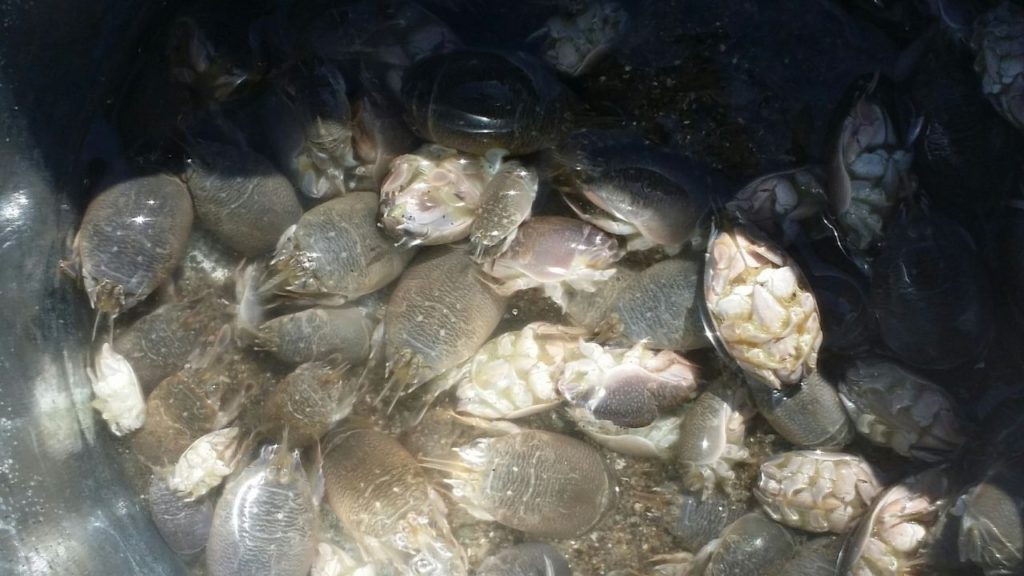
After catching all the fleas, you need, sieve the sand to remain with the sand fleas and move your catch to the bucket. Make sure to keep them in the bucket with sand and plenty of water about half an inch deep, and they will be fine.
Sand Fleas FAQ
How Do You Bait Sand Fleas?
To bait sand fleas, you will need to have them in a bucket and put some water in it. Put some attractor beads on your hook as sand flea eggs are orange and are believed to attract the fish. Snap swivels can be attached to the line to facilitate changing the bait. Add some weight to the line according to what species you are fishing. You then choose the right hook, either Kahle or long-shafted hooks, and hook the flea lightly through their body.
Can You Catch Sand Fleas at Night?
You can catch better quality fleas at night. During the day, they hide away in the sand and can change color to match their surroundings and escape predators.
What Fish Eats Sand Fleas?
Sand fleas are great baits for catching pompano, sea mullet, redfish, black drum, and sheepshead. When using sand fleas as bait, make sure you don’t use more than three at a time. Using three sand fleas on the hook will attract a bite. Bait up with sand fleas, put your rod in a rod holder, and wait to make a catch.
Conclusion
Catching sand fleas can be tricky. They burrow in the sand, and they move fast. Hopefully, with our how-to-catch sandfleas for bait guide, you’ll be able to get your hands on these decapod crustaceans for your next pompano fishing trip!
Table of Contents



